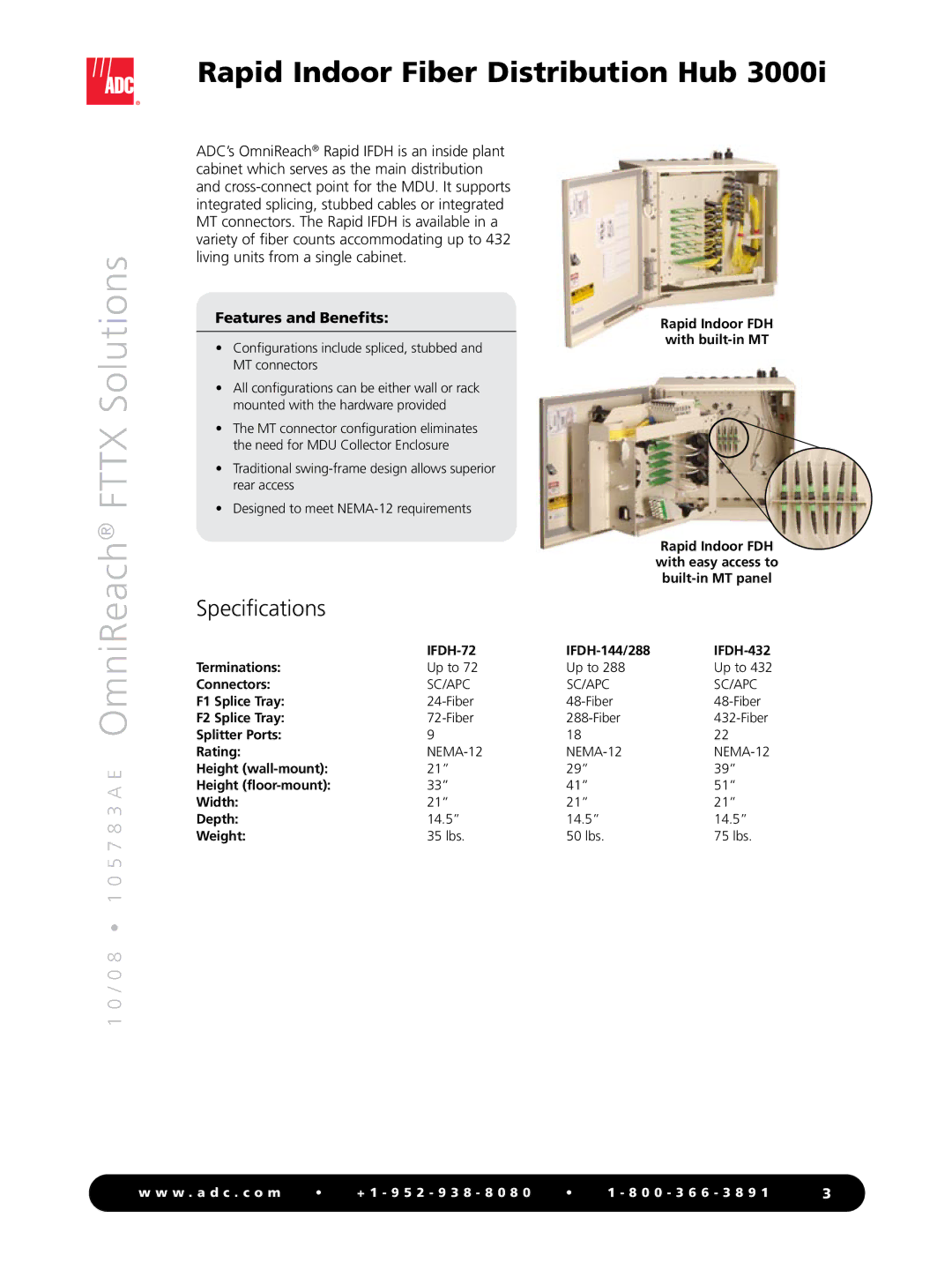MDU Rapid Fiber System specifications
The ADC MDU Rapid Fiber System is a cutting-edge solution specially designed for maximizing the potential of fiber optic networks in multi-dwelling units (MDUs). With the ever-increasing demand for high-speed internet and robust connectivity in residential and commercial buildings, this system stands out for its advanced features and innovative technologies that cater to diverse networking needs.One of the primary characteristics of the ADC MDU Rapid Fiber System is its modular design, which allows for seamless scalability. This enables service providers to easily adapt the system according to changing requirements without the need for significant infrastructure overhauls. The system supports a range of fiber configurations, making it suitable for various MDU applications, ranging from small apartment complexes to larger commercial properties.
Among its main features, the ADC MDU Rapid Fiber System includes high-density fiber termination and distribution. This allows for efficient management of fiber connections, reducing overall installation time and labor costs. The integrated fiber distribution hubs provide centralized management of incoming and outgoing fiber connections, ensuring that network performance remains optimal even with increased user demand.
The system employs several advanced technologies to enhance its capabilities. For instance, it utilizes passive optical network (PON) technology, which enables the delivery of high-speed services, including internet, voice, and video, over a single fiber. This not only maximizes bandwidth efficiency but also minimizes the need for extensive cabling, further reducing operational costs.
Fault tolerance is another key characteristic of the ADC MDU Rapid Fiber System. It is designed to ensure reliable service delivery even in the event of network disruptions. The built-in redundancy features provide an additional layer of protection, allowing for continuous connectivity and minimizing downtime for end-users.
Moreover, the ADC MDU Rapid Fiber System's user-friendly interface simplifies the management and monitoring of network performance. Service providers can easily access real-time data analytics, enabling them to make informed decisions regarding maintenance and upgrades.
In conclusion, the ADC MDU Rapid Fiber System represents a significant advancement in MDU networking solutions. Its modular design, high-density fiber management, integration of PON technology, and robust fault tolerance make it an ideal choice for ensuring reliable, high-speed connectivity. As the demand for data-intensive applications continues to grow, this system stands ready to meet the challenges of modern fiber optic networks efficiently.

